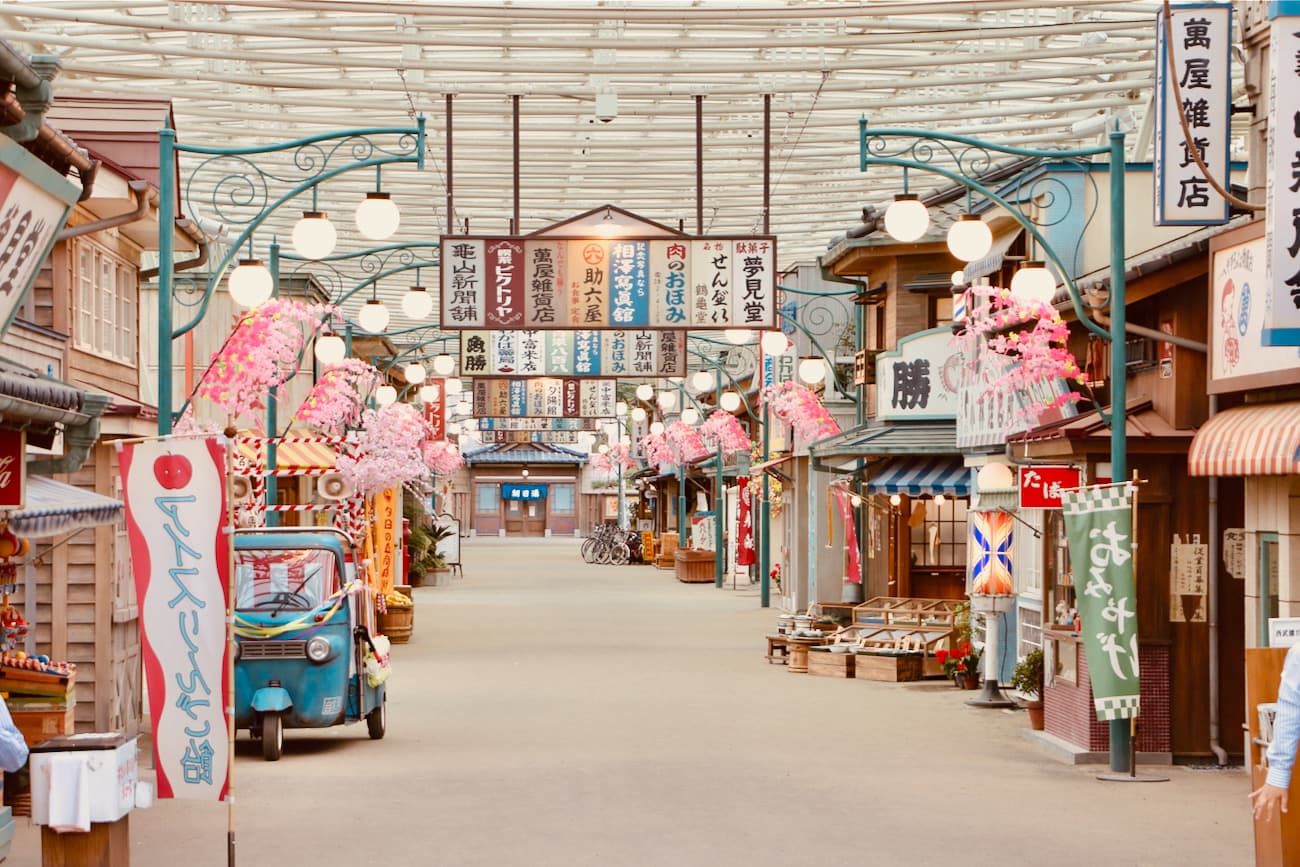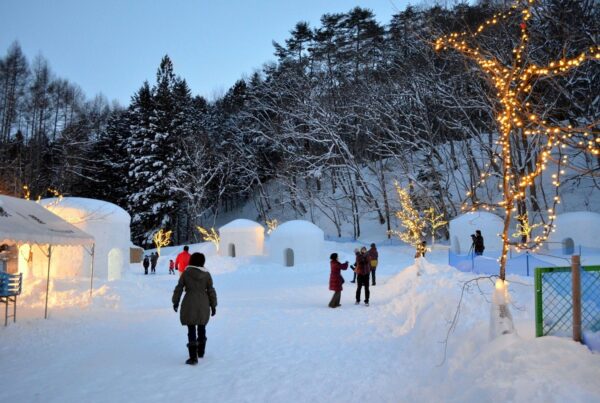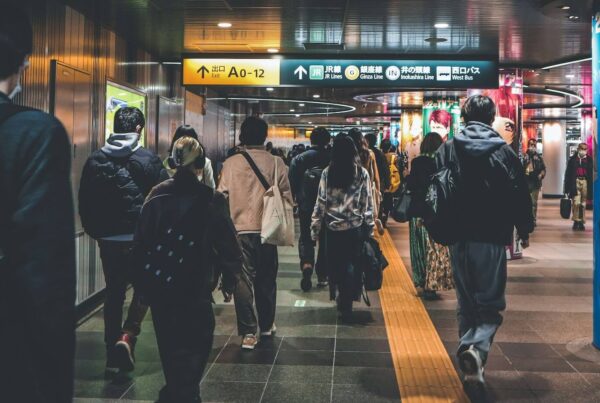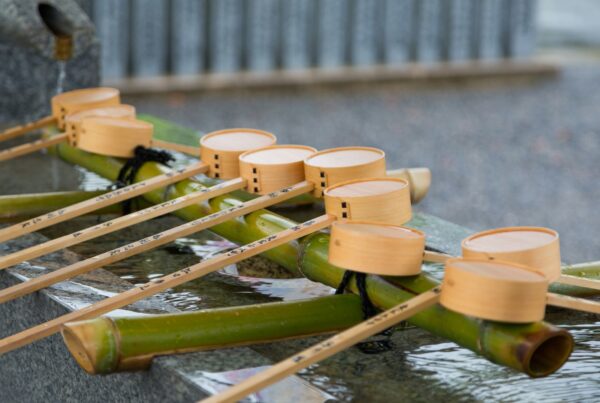Situated just north of Japan’s capital in the Greater Tokyo Area is the prefecture of Saitama. Since much of its southeastern parts are suburbs, while its western parts are still mostly rural, visitors have a myriad of things to enjoy here. You can easily reach many parts of Saitama from Tokyo in about 30 minutes, making it one of the most accessible day trip destinations perfect for those looking for a quick escape.
If you ever find yourself heading to Saitama, here are 10 interesting things to do in the area!
Table of Contents
Travel back in time to the Edo period in Kawagoe

Credit: japantravel.com
Known as “Little Edo” (“Koedo” in Japanese), Kawagoe is a historic castle town in Saitama whose ambience is reminiscent of the ancient Edo period.
As soon as you exit one of the nearest train stations, you are greeted by the main street lined with old two-story merchant warehouses that retain the kurazukuri (clay-walled) architecture along with the Toki no Kane bell tower. Here you can find a number of traditional stores selling Japanese sweets, souvenirs, crafts, and other goods. Traditional landmarks such as Kita-in Temple and Kawagoe Castle are also in the area.
To reach Kawagoe, you can take the train to any of the following three stations: Kawagoe Station on the JR Kawagoe Line or the Tobu Tojo Line, Kawagoeshi Station on the Tobu Tojo Line, or Hon-Kawagoe Station on the Seibu Shinjuku Line.
Address:1-15-8 Motomachi, Kawagoe City, Saitama
Website: https://www.koedo.or.jp/foreign/english/
Admire exquisite bonsai art at the Omiya Bonsai Art Museum

Credit: exploring.cocolog-nifty.com
Part of Omiya Bonsai Village, the Omiya Bonsai Art Museum, Saitama is a unique museum dedicated to bonsai art. It is home to a collection of more than 120 beautiful bonsai masterpieces as well as bonsai-related artifacts. The bonsai on exhibit rotate depending on the season, with about 70 pots always displayed in the garden and gallery.
Aside from the museum, there are six bonsai gardens in Omiya Bonsai Village where you can see the bonsai creations of the different owners. Admission to the Omiya Bonsai Art Museum costs 310 yen for adults, 150 yen for high school and university students as well as those aged 65 and over, and 100 yen for elementary and junior high school students.
The museum is just a five-minute walk from Toro Station on the JR Utsunomiya Line, or a 10-minute walk from Omiya-koen Station on the Tobu Noda Line.
Address: 2-24-3 Toro-cho, Kita Ward, Saitama City, Saitama
Opening Hours: 9:00 a.m. to 4:30 p.m. from March to October; 9:00 a.m. to 4:00 p.m. from November to February (last entry 30 minutes before closing)
Closing Days: Thursdays (except for public holidays) and New Year holidays (*also temporarily closed during exhibition preparation)
Website: https://www.bonsai-art-museum.jp/en/
Learn all about Japanese trains at the Railway Museum

Credit: railway-museum.jp
Located in Omiya in Saitama, the Railway Museum was opened in October 2007 by the East Japan Railway Company (JR EAST) as part of their 20th Anniversary Memorial Project.
The museum has five stations inside, each of which offers various interactive and educational experiences for visitors of all ages. You can see a showcase of historic trains, including the first locomotive train in Japan and the famous Shinkansen, as well as learn about the history of Japanese railway. You also have the opportunity to experience first hand how railway safety operations work and more!
Admission to the Railway Museum costs 1,330 yen for adults, 620 yen for elementary, junior high school, and high school students, and 310 yen for preschool children.
The museum is situated right next to Tetsudo-Hakubutsukan Station, which can be reached from JR Omiya Station via the New Shuttle in just three minutes.
Address: 3-47 Onari-cho, Omiya-ku, Saitama City, Saitama
Opening Hours: 10:00 a.m. to 5:00 p.m.
Closing Days:Tuesdays and New Year holidays
Website: https://www.railway-museum.jp/e/
Witness the otherworldly icicles of Misotsuchi

Credit: japanupclose.web-japan.org
A highlight of winter in Saitama is the three great icicles of Chichibu that create an otherworldly environment for visitors to enjoy. Out of the three, the icicles of Misotsuchi are said to be the oldest and most prominent as they are the only ones that are naturally formed from spring water.
The icicles of Misotsuchi form to a maximum width of about 30 meters and a maximum length of about eight meters from mid-January to mid-February each year. Since it is a natural formation, their appearance is never the same and is made more magical with the night illumination.
A small admission fee of 200 yen per person is charged to help maintain the site.
To reach the icicles of Misotsuchi, take the train to Seibu-Chichibu Station on the Seibu Chichibu Line, then take the Seibu Kanko Bus bound for Mitsumine-Jinja and get off at the Misoba bus stop. From there, the icicles should be a 10-minute walk.
Address: 4066 Otaki, Chichibu City, Saitama
Opening Period: early January to late February (depends on weather conditions)
Closing Days: Tuesdays and New Year holidays
Enter the charming world of Moomins at Moominvalley Park

Credit: feature.veltra.com
Fans of the Moomin characters created by Finnish author Tove Jansson will find great delight in the fact that a theme park revolving around these adorable hippopotamus-like creatures exists in Hanno City, Saitama.
Moominvalley Park opened to the public in March 2019 and is the first Moomin theme park outside of Finland. Not to be confused with the nearby Tove Jansson Akebono Children’s Forest Park, the park has various attractions that feature the life and environment of the Moomins.
Entrance to Moominvalley Park costs 2,500 yen for adults (2,300 yen for advance ticket purchase) and 1,500 yen for children (1,300 yen for advance ticket purchase). You can also opt to buy the one-day pass which covers all paid facilities at 4,200 yen for adults (4,000 yen for advance ticket purchase) and 2,300 yen for children (2,100 yen for advance ticket purchase).
The park is a 12-minute bus ride from Higashi-Hanno Station on the JR Hachiko Line, or a 13-minute bus ride from Hanno Station on the Seibu Ikebukuro Line.
Address: 327-6 Miyatazawa, Hanno City, Saitama
Opening Period: 10:00 a.m. to 5:00 p.m. on weekdays; 10:00 a.m. to 6:00 p.m. on weekends and holidays
Closing Days: year-end and New Year holidays
Website: https://metsa-hanno.com/en/
See a carpet of red spider lilies at Kinchakuda Manjushage Park

Credit: japantravel.navitime.com
Every autumn, Kinchakuda Manjushage Park in Saitama’s Hidaka City becomes a popular destination for seeing red spider lilies, called “higanbana” or “manjushage” in Japanese. Around five million red spider lilies bloom here, painting the whole area bright red that makes for a great autumn scenery. The best time to view these flowers is between mid-September and early October, during which the Manjushage Festival is also held.
Aside from the red spider lilies, the park also has a field of cosmos plants during fall. Other seasonal flowers that grow here include rape blossoms in spring and hydrangeas in summer.
Admission to the park during the festival period costs 300 yen for adults, while children in junior high school and below can get in for free.
Kinchakuda Manjushage Park is about a 15-minute walk from Koma Station on the Seibu Ikebukuro Line.
Address: 125-2 Oaza Komahongo, Hidaka City, Saitama
Opening Period: 8:00 a.m. to 5:00 p.m.
Website: https://www.city.hidaka.lg.jp/soshiki/somu/somu/jinkensuishinshiminkatudou/foreigner/Sightseeing/6819.html
Wish for relationship luck at Kawagoe Hikawa Shrine

Credit: ooobs.com.hk
With a history of approximately 1,500 years, Kawagoe Hikawa Shrine in Kawagoe City, Saitama is well known for being a power spot for love, relationships, and marriage. People come here to pray and ask for love blessings. Some even write their prayers on small wooden plates (“ema” in Japanese), which are then dedicated to the shrine at a tunnel. Auspicious items such as matchmaking charms and stones are also sold here.
In summer, the shrine holds the Enmusubi Wind Chime Festival wherein about 2,000 colorful wind chimes are displayed along a 10-meter-long corridor of the shrine. They make a lovely sound every time the wind blows.
To reach Kawagoe Hikawa Shrine, take the train to Kawagoe Station on the JR Kawagoe Line or the Tobu Tojo Line. From there, take the Tobu Bus bound for Shimmeicho and get off at Kitamachi. The shrine is about a five-minute walk from the bus stop.
Address: 2-11-3 Miyashitamachi, Kawagoe City, Saitama
Opening Period: 9:00 a.m. to 5:00 p.m.
Website: https://www.kawagoehikawa.jp/ (*Japanese only)
Do some shopping at AEON LakeTown

Credit: japantravel.com
If you are looking to do some serious shopping, one place in Saitama that you should not miss is AEON LakeTown. This massive shopping mall sits next to a lake, thus the name, and is made up of three separate areas: kaze, mori, and LakeTown OUTLET. There are over 700 shops and restaurants here, including a cinema complex.
AEON LakeTown is easily accessible as it is just right outside Koshigaya-Laketown Station on the JR Musashino Line.
AEON LakeTown kaze
Address: 4-2-2 LakeTown, Koshigaya City, Saitama
Opening Period: 10:00 a.m. to 8:00 p.m.
Closing Days: year-end and New Year holidays
Website: https://en.aeonmall.global/mall/laketown-kaze/
AEON LakeTown mori
Address: 4-2-2 LakeTown, Koshigaya City, Saitama
Opening Period: 10:00 a.m. to 8:00 p.m.
Closing Days: year-end and New Year holidays
Website: https://en.aeonmall.global/mall/laketown-kaze/
AEON LakeTown OUTLET
Address: 4-2-2 LakeTown, Koshigaya City, Saitama
Opening Period:10:00 a.m. to 8:00 p.m.
Closing Days: year-end and New Year holidays
Website: https://en.aeonmall.global/mall/laketown-kaze/
Visit Johnson Town, Japan’s own slice of America

Credit: travel.gaijinpot.com
Situated near Iruma Air Base, Johnson Town is a small neighborhood in Iruma City that resembles a 1950s American town. Here you can find vintage and antique shops selling novelty items, cafes and restaurants offering burgers and apple pie, as well as Western-style residential houses with vintage cars parked outside.
Keep in mind that although American culture is prominent in the town, the owners of the establishments are mostly Japanese.
Johnson Town is a 15-minute walk from Irumashi Station on the Seibu Ikebukuro Line.
Address: 1-6-1 Azumacho, Iruma City, Saitama
Website:http://johnson-town.com/ (*Japanese only)
Step into 1960s Tokyo at Seibuen Amusement Park

Credit: nakagawamanabu (Yahoo Creators)
After undergoing a major revamp, Seibuen Amusement Park in Tokorozawa, Saitama reopened as a Showa era theme park inspired by Tokyo in the 1960s.
Attractions here include classic ones like the Ferris wheel and a carousel, along with a new Godzilla ride. There are also live street performances that will keep visitors entertained. What makes this park even more interesting is the fact that it has its own currency reflecting the prices of that particular time period, completing the Showa experience.
A one-day pass to Seibuen Amusement Park costs 4,400 yen for adults and 3,300 yen for children.
The park is located right outside Seibuen-yuenchi Station on the Seibu Yamaguchi Line, so it is easily accessible.
Address: 2964 Yamaguchi, Tokorozawa City, Saitama
Opening Period:9:00 a.m. to 7:00 p.m. (exact schedule may vary)
Closing Days:irregular holidays
Website: https://www.seibu-leisure.co.jp/amusementpark/index.html (*Japanese only)
With this list, you will surely have things to do in Saitama Prefecture for days on end. Whether you are simply visiting for a day trip or staying a few days, Saitama has plenty of charms just waiting to be discovered. The only question is where do you want to go first?
Be sure to follow us on Facebook, Instagram, Twitter, and Pinterest for more fun stuff! Matane!

Aree Anas
Originally from the Philippines, Aree called Japan her second home for a long time before making a permanent move in 2015. Traveling, savoring great food, and conquering extreme roller coasters are just some of the things she loves to do. Always up for new adventures and experiences, she seeks to share her knowledge of Japan through her writing.








